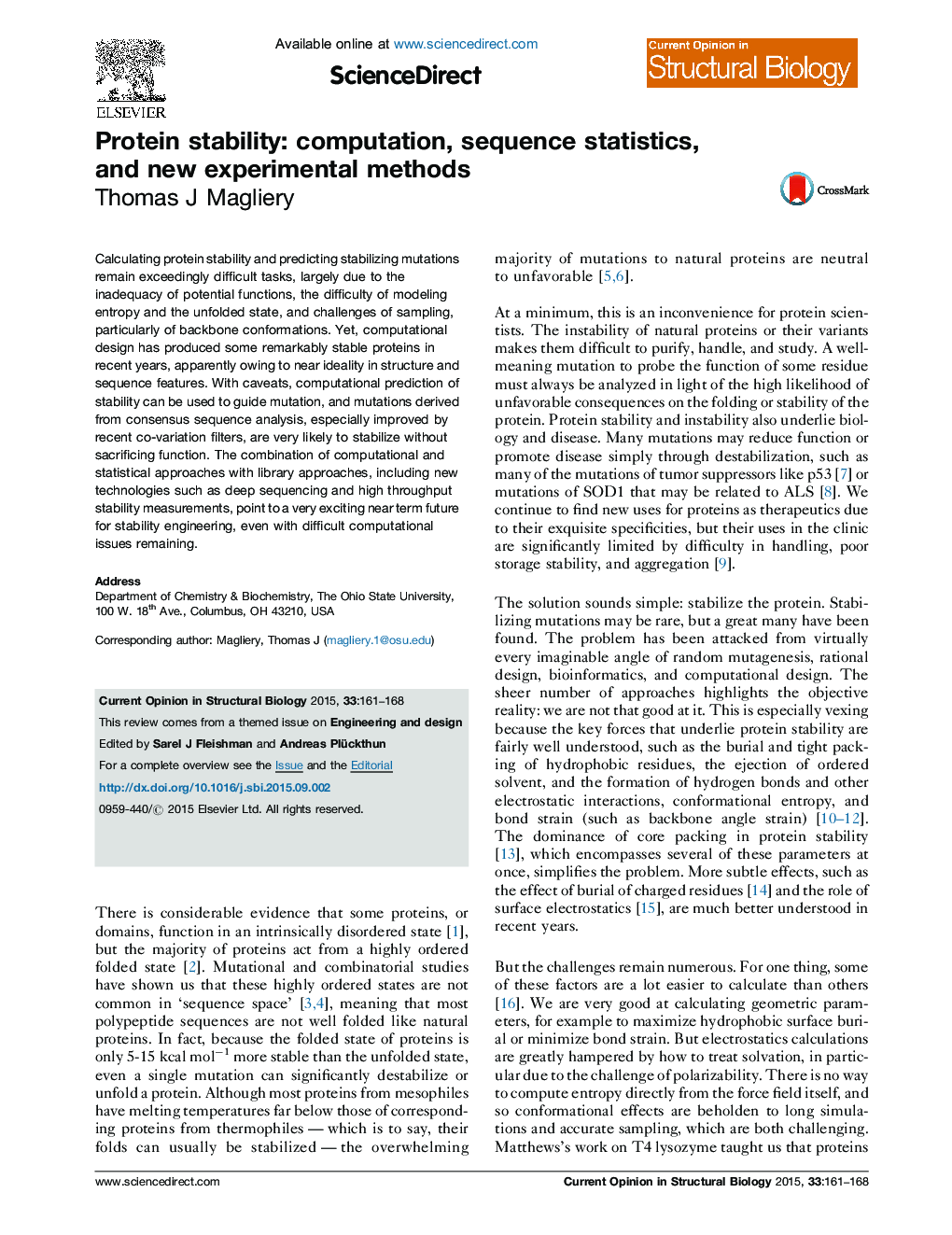| Article ID | Journal | Published Year | Pages | File Type |
|---|---|---|---|---|
| 8319893 | Current Opinion in Structural Biology | 2015 | 8 Pages |
Abstract
Calculating protein stability and predicting stabilizing mutations remain exceedingly difficult tasks, largely due to the inadequacy of potential functions, the difficulty of modeling entropy and the unfolded state, and challenges of sampling, particularly of backbone conformations. Yet, computational design has produced some remarkably stable proteins in recent years, apparently owing to near ideality in structure and sequence features. With caveats, computational prediction of stability can be used to guide mutation, and mutations derived from consensus sequence analysis, especially improved by recent co-variation filters, are very likely to stabilize without sacrificing function. The combination of computational and statistical approaches with library approaches, including new technologies such as deep sequencing and high throughput stability measurements, point to a very exciting near term future for stability engineering, even with difficult computational issues remaining.
Related Topics
Life Sciences
Biochemistry, Genetics and Molecular Biology
Biochemistry
Authors
Thomas J Magliery,
